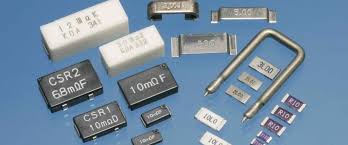In the realm of modern technology, the significance of efficient Best price for SMD/SMT Nickel Strip for Lithium Battery energy storage cannot be overstated. With the burgeoning demand for electric vehicles (EVs), portable electronics, and renewable energy systems, the spotlight is on battery technology. Behind the scenes of these powerhouses lies a humble yet indispensable component: the nickel strip. In hierdie artikel, we delve into the specifics of nickel strips, exploring their composition, functions, and crucial role in battery packs.
Understanding Nickel Strip:
Nickel strip, often referred to as nickel tape or nickel foil, is a thin, flat metal strip composed primarily of nickel with small traces of other metals. Its intrinsic properties make it an ideal choice for various applications, particularly in battery manufacturing. The strip is typically manufactured through a process of rolling and annealing, ensuring uniform thickness and enhanced durability.
Composition and Properties:
Nickel strip is predominantly composed of nickel, a versatile metal renowned for its high electrical conductivity, corrosion resistance, and thermal stability. These inherent properties make nickel an excellent candidate for conducting electricity within battery systems. Daarbenewens, nickel strips may contain small percentages of alloying elements such as copper, iron, or chromium, tailored to enhance specific characteristics like strength or conductivity.
Functions in Battery Packs:
The primary function of nickel strip within battery packs is to facilitate the flow of electrical current between individual battery cells and the external circuitry. This entails connecting the positive and negative terminals of adjacent cells to form a series or parallel configuration, depending on the desired voltage and capacity of the battery pack. Nickel strips serve as conductive bridges, ensuring efficient transmission of electricity while withstanding mechanical stresses and environmental factors.
Verder, nickel strips play a pivotal role in dissipating heat generated during charging and discharging cycles. By efficiently conducting heat away from the battery cells, they help maintain optimal operating temperatures, thus prolonging the lifespan and performance of the battery pack. This thermal management function is critical, especially in high-power applications where heat buildup can degrade battery efficiency and pose safety risks.
Applications Across Industries:
The versatility of nickel strips extends beyond conventional lithium-ion battery packs, finding applications in a myriad of industries. From consumer electronics and electric vehicles to renewable energy storage systems, nickel strips are integral components in the transition towards a sustainable and electrified future. Their reliability, conductivity, and thermal stability make them indispensable for powering a wide array of devices and technologies.
Afsluiting:
In the intricate tapestry of battery technology, nickel strips emerge as unsung heroes, silently enabling the seamless flow of energy that powers our modern world. From their impeccable conductivity to their robust thermal properties, nickel strips embody the essence of efficiency and reliability in energy storage systems. As we continue to push the boundaries of innovation, let us not forget the humble nickel strip, an indispensable ally in our quest for a cleaner, greener tomorrow.

